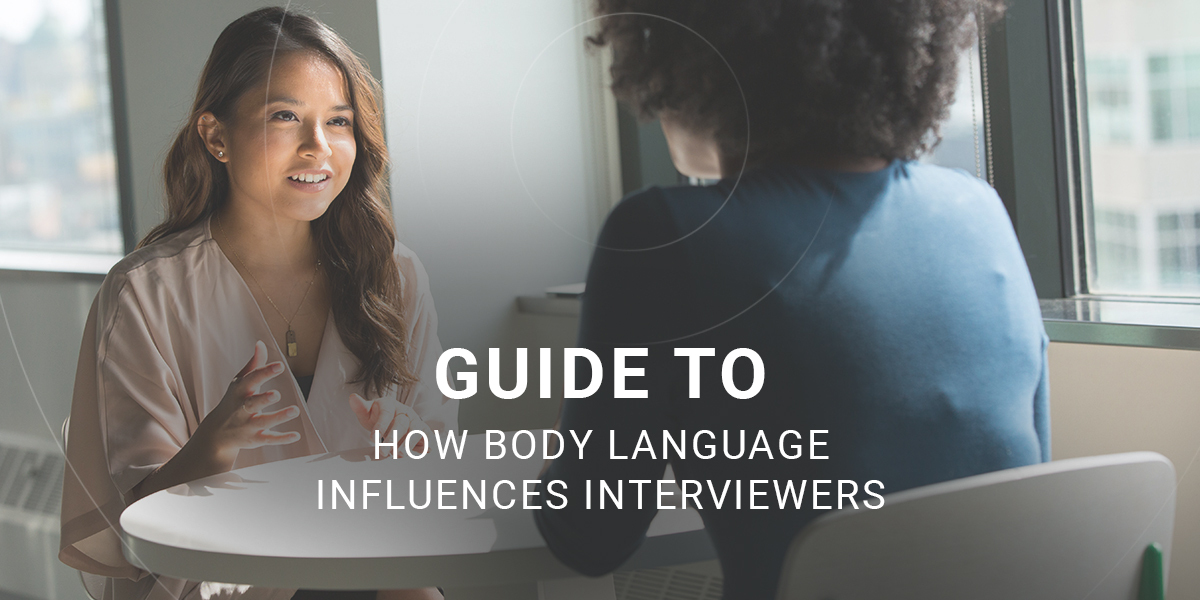
You may have heard that the average person takes around seven seconds to form an opinion about someone else, and in an interviewing scenario, this could not be more true! Some studies even suggest it takes some one-tenth of a second to evaluate trustworthy qualities in people – so for your next interview, let’s make every second count.
The idea of the “7% Rule” has been floating around since the 1970s, following the studies of Albert Mehrabian – put simply, 7 percent of meaning is communicated through spoken word, 38 percent is presented through tone of voice, and the remaining 55 percent is all through the use of body language. In other words, around 93 percent of an interviewer’s attention is completely focused on everything other than what you are saying, it’s about the how not the what.
Here are some body language basics to maximise your potential in non-verbal communication, some do’s and don’ts, and concepts to focus on making that ninety-three percent, one hundred percent the reason for getting that job!
Breathing
You wouldn’t expect an athlete to begin performing at their best without warming up – and they certainly couldn’t win without breathing efficiently! Breathing is our body’s regulator, and stressful situations will cause us to tighten our chests and stop breathing reliably. There is no coincidence between the connection between meditation and breathing techniques.
This tip begins outside of your interview as well, and may even come in handy elsewhere in your day to day life. By focusing on your breathing – slowly, fully and rhythmically – you will be amazed to find the stress and overwhelming aspects of a situation dissipate, not only allowing you to focus on the important elements of your interview but also displaying the qualities of confidence and cool-headedness to your employer.
Eye Contact
Have you ever been in a situation where a conversation seemed stunted by someone looking at the ground, or just above your eyes, or worse still, are you the type to avoid eye contact altogether? A lot about a person is revealed through their use of eye contact, and most of a conversation is carried through the way we look at one another – focusing on this may just help get the real you across more effectively.
Many experts suggest that when speaking, you should look your interviewer in the eyes around fifty percent of the time, as opposed to seventy when listening – this displays both confidence in your own ability to speak, and an understanding that you are able to take in information effectively. 4 to 5 seconds is really the sweet spot to maintain eye contact, anything below may suggest a skittishness, or shyness, while anything higher could suggest aggressive energy or overbearing qualities. Break up eye contact by glancing in specific areas – upward glances suggest thought and information recall, while lower glances suggest humility and personal information, so gauge the conversation and do what feels right!
Posture
The way we frame our bodies has just as much of an effect in communicating our qualities to others as effective eye contact – for example, we can assume shyness or anti-social behaviour in someone who chooses to slouch in their chair, or turns their shoulders inward. Posture, while not necessarily consciously, is always in the mind of an interviewer – the question is, how should you hold yourself?
When standing, or entering a room, make sure to keep your back straight, your shoulders back and your head up – it sounds simple, but we need to make those first seven seconds count! Not only does this stance show clear confidence, but there is also strong evidence to suggest that your own self-confidence is increased and influenced by your own stance – in other words, stand confidently, be confident.
While sitting, maintain the same principles – while it may be comfortable to relax in your chair, and begin to slouch your back, remember: you are in a professional environment! Keep your back straight, frame yourself openly and confidently! While your interviewer is speaking, be sure to lean in slightly to convey that you are listening, and exhibiting key workplace qualities – nodding your head can achieve the same effect!
Hand Gestures
We all know a criminal gesticulator when we see one! Those extravagant few, who look like they are conducting an orchestra while explaining what just happened at the shops. While it can be fun and exciting to emphasise what you’re saying with hand gestures, restraint is the name of the game here.
From shaking hands to waving goodbye, the way we use our hands is integral to the way people see us, and in a professional environment, we need to keep it competent. It has been noted in several studies that small hand movements, for example, lightly touching your own fingertips, clasping your hands and moving your fingers, exude trustworthy and honest traits. Your own self-restraint should not be underestimated though – take time to place your hands in your lap, show your interviewer that you are taking on board information!
For things to avoid, our rule of thumb is not to go overboard, no fast or erratic hand movements – clenching fists or waving hands may display unpredictability or overcompensation for nervousness! Touching your face, or similar actions (i.e rubbing your neck or arms) is also something to steer clear from, as this suggests dishonest or ulterior demeanour! Most importantly, keep your arms open! Crossing or folding your arms close to your chest suggests exactly what it looks like – closing yourself off – and we want your interviewer to see all that you’ve got!